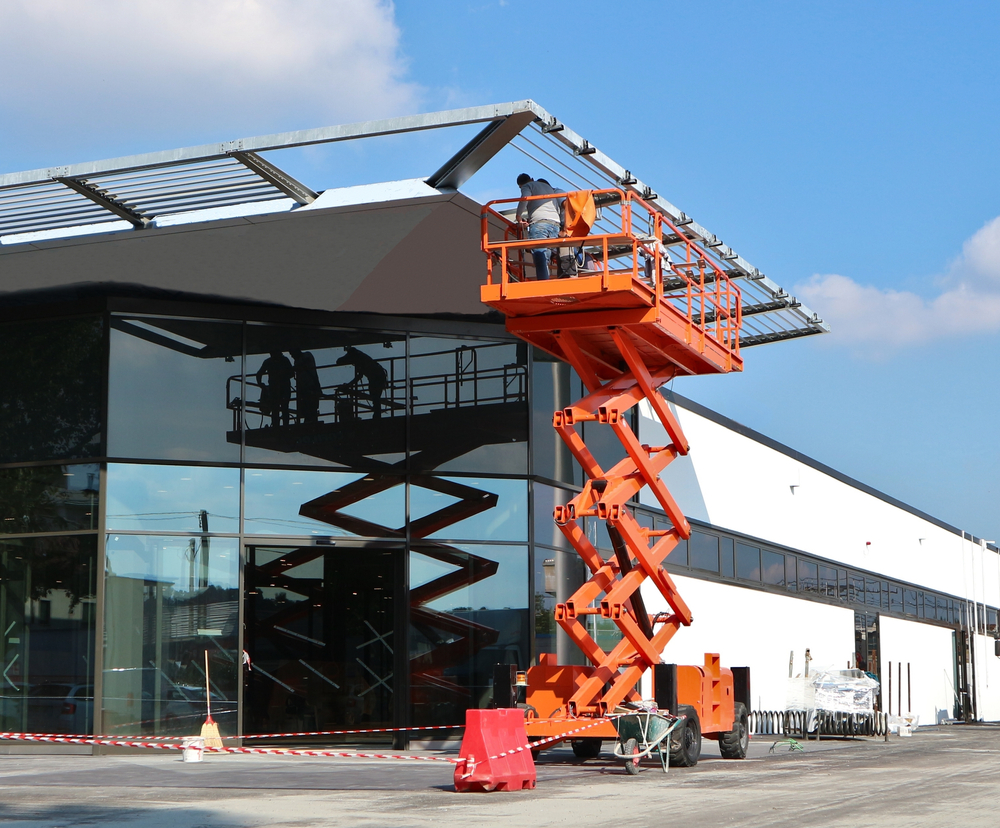How to Use a Scissor Lift Trailer
Scissor lift trailers are specifically designed to transport scissor lifts to the job sites where they are needed. They look a great deal like general-purpose trailers, but they keep the lift in place during towing and allow for the safe transfer of loads and cargo.
How does a scissor lift trailer work, and how should you load one? The answer varies based on the type of trailer in use and the worksite.
Types of Scissor Lift Trailers
Scissor lift trailers typically fall into two categories: lift-a-load elevating platforms and “lo riser” inclining platforms. Both scissor lift trailer styles are designed to make deliveries safer, easier, and more efficient. However, each has its respective pros and cons, so it pays to evaluate each one closely.
A lift-a-load elevating platform trailer provides a portable loading dock. Generally, a scissor lift operator can hydraulically lower or raise the platform, keeping it level at all times. Thus, the platform delivers a low center of gravity, making it safe and easy to tow a lift. And when the platform is lowered to ground level, it can be set up at the low loading angle. This ensures that those who need to load a scissor lift onto the trailer platform should have no trouble doing so.
Lift-a-load elevating platforms come in multiple styles, including straight tongue, gooseneck hitch, and single or dual axle varieties. These platforms often have weight capacities that range from 4,400 to 15,000 lbs.
Comparatively, a lo riser inclining platform trailer has a 16,000-pound capacity platform that can be hydraulically lowered to ground level. This scissor lift trailer is especially effective with heavy, awkward, or difficult-to-load equipment like landscaping equipment, pavers, or sweepers. In addition, because it has no crown points, a scissor lift can be loaded directly onto the platform with minimal time, energy, or effort required.



How to Transport a Scissor Lift On a Trailer
Before you load a scissor lift onto a trailer, make sure that the trailer can handle the weight of the lift. This will ensure that your scissor lift can be transported safely from one location to another. You may also need to use certain attachments to secure the lift in place. Also, confirm that the trailer’s wheels are chocked to keep them from rolling.
When you are loading a scissor lift onto a trailer before it is attached to a truck, place the nose jack under the scissor lift trailer. Next, make adjustments to ensure that the lift is within an inch of the trailer. This prevents the trailer from moving forward during the loading process.
There are several steps to scissor lift safety and minimize risk when loading a scissor lift onto a trailer, including:
- When you are loading the scissor lift onto the trailer, make sure that the trailer is on flat, firm ground.
- Make sure that any ramps you use to load the lift can handle its weight. You should also check the lift wheels to make sure they are free of debris, grease, mud, and other particles.
- Before you load the lift onto the trailer, run its engine at the lowest speed setting.
- Then, drive the lift in reverse onto the trailer while keeping its forks pointed toward the rear.
- Once it is on the trailer, lower its forks and tilt them forward before they touch the ground.
- Place wooden blocks behind its wheels and fasten them into place.
- Shut off the scissor lift’s fuel supply and disconnect its battery terminals.
- Finally, use chains and nylon straps to secure it to the trailer. Inspect it one last time to make sure it is securely in place before starting your scissor lift transport.
Those who have additional questions about loading a scissor lift onto a trailer should utilize an OSHA-approved certification training program. They can then learn about all aspects of scissor lift and trailer safety.
Driving Tips for Towing a Scissor Lift Trailer
Driving while towing a fully loaded scissor lift trailer requires training and experience. Both the trailer’s size and the load’s weight will affect every aspect of your driving, from acceleration to braking and steering. Important safety tips include:
- Before you start towing the trailer, check that all the safety chains and lights are secure.
- Leave more space than usual between you and the car in front of you, because it will take longer to brake.
- Drive more slowly than usual to allow plenty of time to stop, and to minimize trailer sway.
- Use towing mirrors so you can see better.
- Practice driving in reverse with the scissor lift trailer before driving on the open road. This is a skill that takes a lot of practice.
- Stay alert and be ready for anything that happens ahead of you. If someone in front of you makes a sudden turn or changes gears quickly, it will be harder to control the scissor lift trailer.
- When parking, choose a spot that is far away from other cars and has enough room for you to pull forward when you need to leave.
Finally, when loading or unloading the trailer on a public road, use traffic cones, hazard tape, signs, and flags, so others stay safe as you manage your cargo.



Scissors Lift and Trailer Training
CertifyMeOnline.net offers an OSHA-compliant, comprehensive scissor lift certification training program. We can teach your workers how to use a scissor lift, about scissor lift trailer safety, and how to ensure a safe and efficient work site. Our prices are affordable and far less than a single fine or accident! Your workers can become fully certified with our online training within an hour. We are happy to answer any questions about our scissor lift certification training program. Start here to sign up your workers. For more information about our program, please contact us online or call us today at (602) 277-0615.
